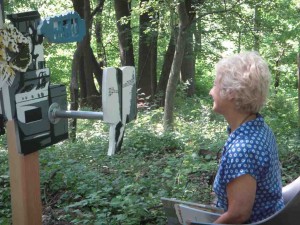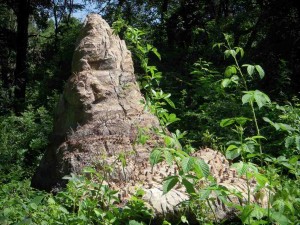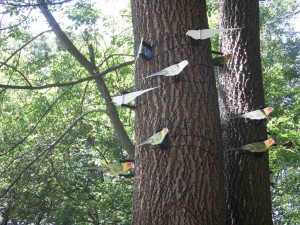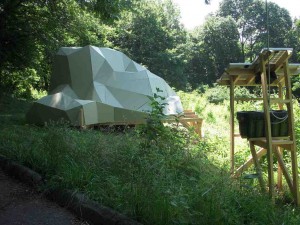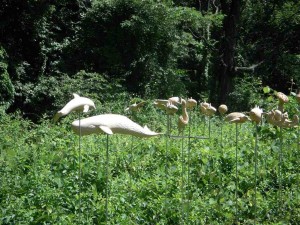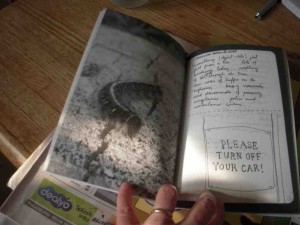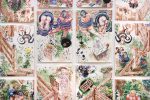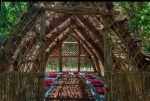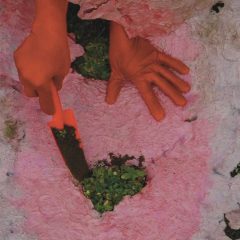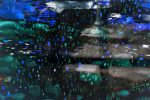You may think you know the Red Riding Hood story but do you really? Is Red really so innocent? And what about that wolf–is he so evil? Surely the story is not that black, white and red. We went to the woods at the Schuylkill Center with our buddy, the wonderful Jeanne Jaffe, to see how she is telling the tale–with the wolf and Red and some really big teeth–and a lot of ambiguity. Her piece is called “Red Riding Hood as a Crime Scene.”
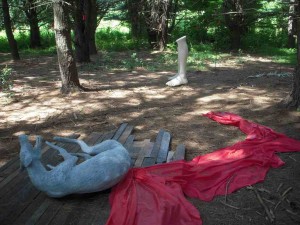
The piece is part of Facts and Fables, an exhibit of woodland installations by seven artists at SCEE.
Jaffe’s forensic approach is based on a lot of research into fairy tales in general. These are tales that are violent physically and emotionally and that don’t usually end on a happy note. How happy can Red be if her granny’s been eaten? How happy are Hansel and Gretel, who, even after escaping the witch, have to confront the fact that their parents abandoned them.
Without getting too Freudian or Jungian, Jaffe’s large, sprawling installation suggests there are alternate readings to tales of innocence and evil. Here are some details from the piece, which is well worth the trip out to the SCEE. Go early to avoid the heat and bugs.
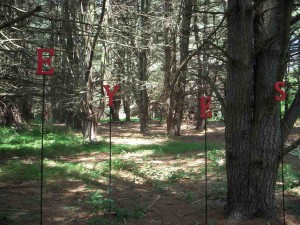
The words Jaffe places around the site are familiar from the tale and act as prompts to new thinking.
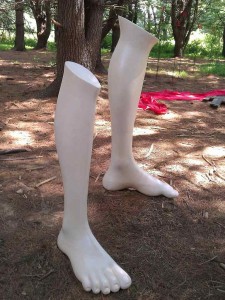
The legs were made through a 3D scanning program Jaffe used when she was in residence at Breadboard. Two different sizes, both huge, suggest the figure in motion as well as the possibility that she could be tried in court as an adult. Jaffe’s reconfiguration posits that we all could be wearing the Red Riding Hood.
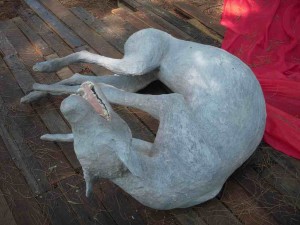
Surely many of us missed this: How could we not consider the wolf’s (and any critter’s) pain and death? Here, as with the disembodied legs, the animal is not clearly male or female, young or old. Its two characteristics are a) formidable teeth; and b) pain. This animal is in the death throes.
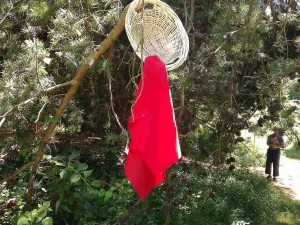
Jaffe’s public art project is as beguiling as the best fairy tale. It pulls you into a large shady grove and then asks you to figure out the story. Playful and yet dark like like its source material, this is open enough for any viewer to get what they want out of it.
Also in this show are Jeremy Beaudry, with historical marker-like guides on placards in the woods and an ambivalent nature guide book/zine that is a giveaway; David Dempewolf, with a kitchen sculpture in the woods and a video inside the Center’s building; Brian Collier, with a bird sculpture installation; Chad Curtis, with a surveillance camera and sculpture installation; Susan Hagen, with carved sea creatures–oil spill victims; and Blane De St-Croix, with a miniature landscape environment. Below are pictures.
